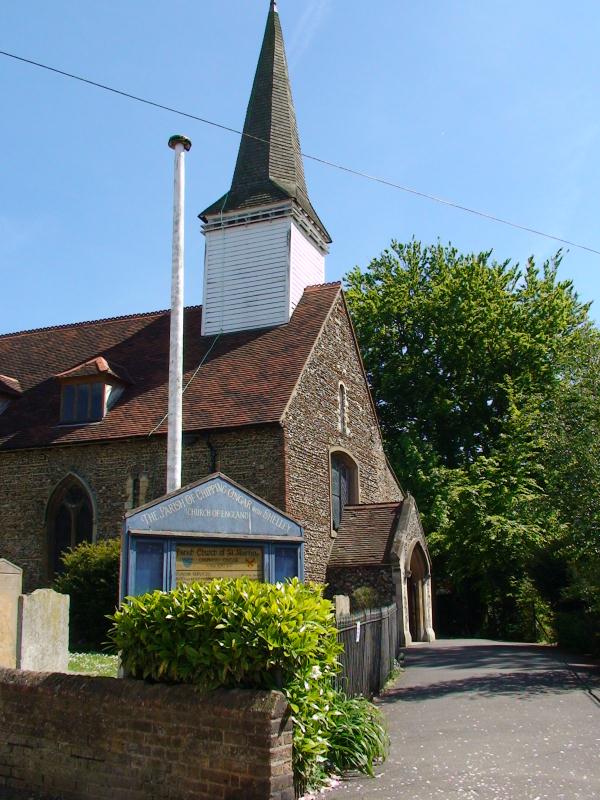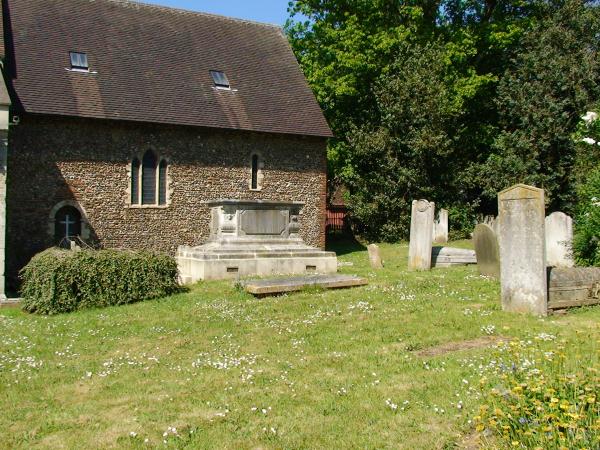St Martins Church 

Boodles Tomb
St Martin’s is a historic Norman church in the quiet little market town of Chipping Ongar and is situated just off the High Street. I moved to Ongar in 1981 and the first time I saw this church it was covered in snow with the sound of Christmas Carols coming from it.
The church was built just after the Norman conquest, around 1080. The original nave and chancel still survive, and the flint walls incorporate reused Roman bricks and tiles - clearly visible from the outside. The church was extended in Victorian times, but still retains its 15th century steeple, complete with 17th century clock.
Still, outside, on the north wall of the sanctuary is a small recess (now with a door), with a very small window on the inside. This was originally an anchorite cell - where a hermit could take part in the service without being seen or coming into contact with the parishioners.
Inside, the atmosphere in the nave is dark, thanks to the low, heavy 14th century roof, and the prolific amount of Victorian stained glass. The porch, south aisle and nave arcade are also Victorian, and you have to look hard to find the mediaeval features: narrow, round-headed Norman windows in the north wall, above a stoup for Holy Water.
The chancel arch was rebuilt around 1350, but some Norman windows also survive in the chancel, alongside 14th and 16th century insertions, and some of the 'scissor’ roof beams are also thought to be Norman. The East window is a nice Decorated Gothic example from about 1300.The fittings include a 16th century pulpit, a 15th century font and, on the south wall of the chancel, a memorial to Sara Mitford (d. 1776) by the noted English sculptor Joseph Nollekens. Under the south side of the altar is another memorial, to Jane Pallavicini, cousin of Oliver Cromwell (whose father fought on the Royalist side).
One of the Victorian windows depicts David Livingstone - who lived in Chipping Ongar in 1838-40 to undertake probationary year at the London Missionary Society school.
There is also a plaque in the church relating to Joseph King who, in1676 left property in trust to help educate the children of Ongar. This trust is still running and helped pay for books for my daughter when she went to university. Thank you Joseph.
The church is small and so, inevitably is the churchyard. This makes it relatively easy to locate the grave of Edward Boodle (1722-72) who is claimed to be the founder of Boodle's the famous gentlemen’s club. He was in fact the head waiter at the establishment when it opened in 1762. He held such sway over the place and was so integral to its success that the regulars, who included such luminaries as Beau Brummell, David Hume, Adam Smith, Edward Gibbon and the Duke of Wellington named this exclusive establishment after its principal employee.
(Thanks to dmj1962 at Qype for much of the historic information above)
The co-ords are not for the cache but will take you to a plaque on a wall which you must read. The cache co-ords are N51 42 *** E000 14 *** The missing N figures are 2133 minus the year. The missing E figures are 872 minus the distance. You now have a short walk to the cache, it is not on church grounds. Good Luck.
If anybody would like to expand to this series please do, I would just ask that you could let Sadexploration know first so he can keep track of the Church numbers and names to avoid duplication